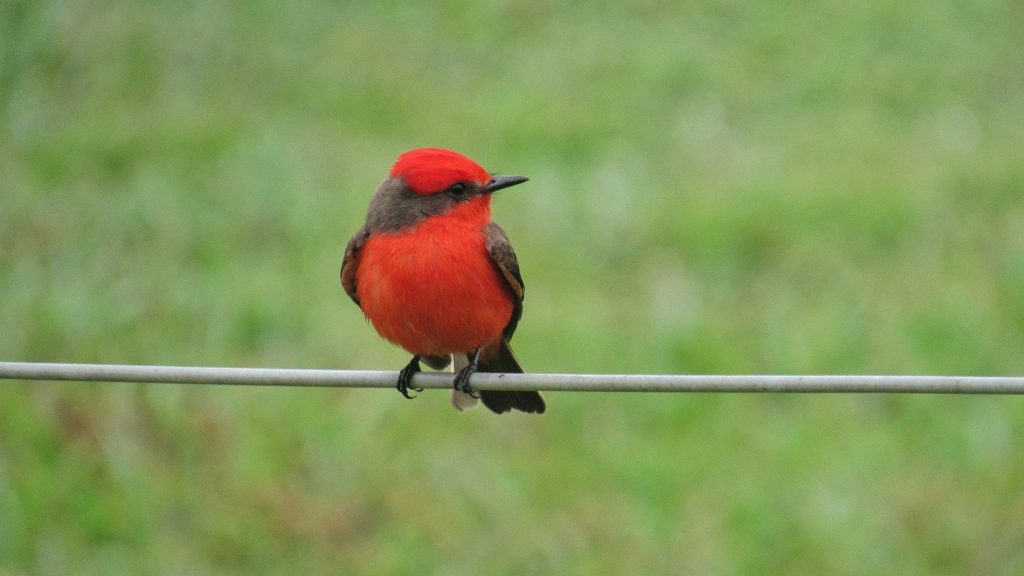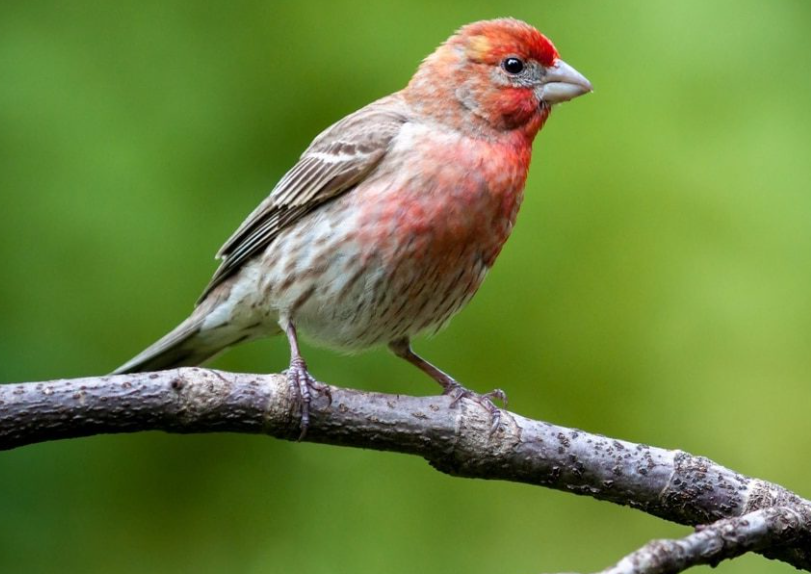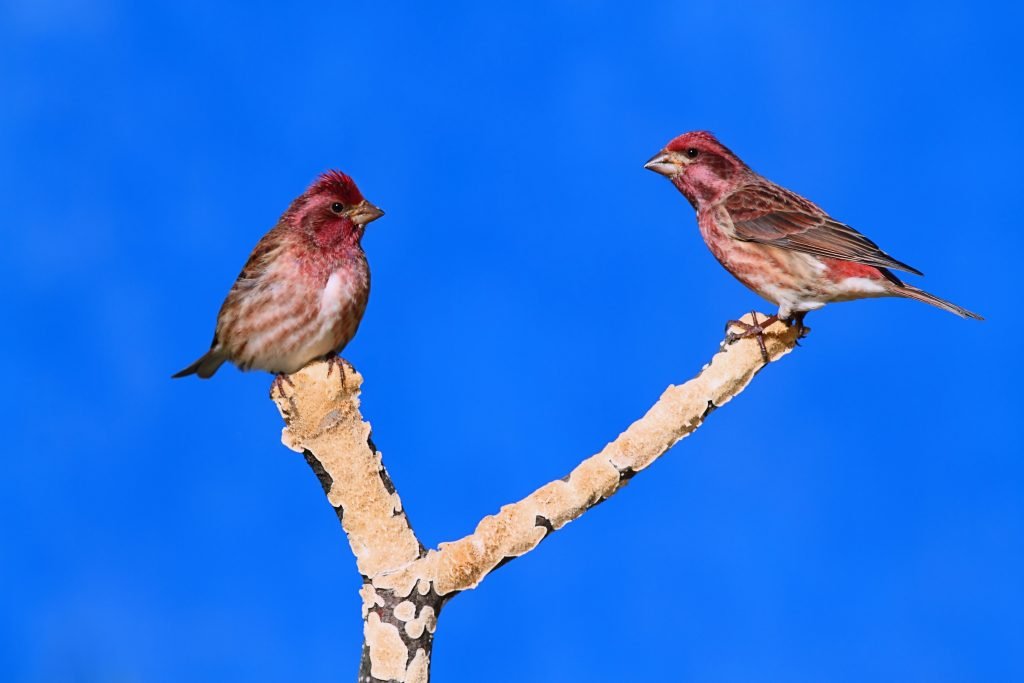In “The Red Birds of California,” this article provides a delightful exploration into the vibrant world of red, orange, and yellow birds found in the Sunshine State. California boasts an impressive array of avian species, with over 675 different types calling it home. From the majestic House Finch to the enchanting Anna’s Hummingbird, readers will discover a fascinating assortment of feathered friends in this captivating piece. And while color is undoubtedly eye-catching, the article emphasizes that identifying birds through their shape and size is often more crucial. With detailed descriptions and accompanying photographs, readers will be enveloped in the beauty and diversity of California’s red, orange, and yellow birds.

Red Birds
California is home to a wide variety of bird species, and among them are some striking red birds. These vibrant creatures bring color and beauty to the landscape, and their presence is always a delight for bird enthusiasts. Let’s take a closer look at some of the red birds found in California.
House Finch
One of the most common red birds in California is the House Finch. These small birds have a short, thick bill and a distinctive red coloration on their heads, chests, and backs. The females, on the other hand, have a duller coloration with streaks of brown. House Finches are known for their cheerful songs, which can often be heard in residential areas and gardens throughout the state.
Purple Finch
Another red bird that can be spotted in California is the Purple Finch. These birds have a beautiful reddish-purple coloration on their heads and bodies, contrasting with their brown wings. The males are particularly striking, with their vibrant plumage and melodious songs. Purple Finches are commonly found in coniferous forests and can often be seen perched on treetops or flying from branch to branch.
Red-breasted Sapsucker
The Red-breasted Sapsucker is a unique red bird found in California. As the name suggests, these birds have a red breast, but their overall coloration is more of a combination of black, white, and red. They have a distinctively patterned head and a pale yellow belly. Red-breasted Sapsuckers are known for their drumming behavior, where they create small holes in tree bark to feed on the sap. These holes also attract other birds and insects, making them an important source of food for various species.
Anna’s Hummingbird
In addition to the larger birds, California is also home to several red hummingbird species. One of the most common in the region is Anna’s Hummingbird. These tiny birds have a vibrant red throat and head, reflecting the sunlight in an iridescent manner. The rest of their body is a combination of gray, green, and brown. Anna’s Hummingbirds are known for their dazzling aerial displays, performing acrobatic maneuvers and emitting high-pitched chirps. They are a frequent visitor to gardens and flower-rich areas.
Orange Birds
California is not only home to red birds but also boasts a variety of orange-colored birds. These birds add a splash of color to the landscape and can often be seen in different habitats across the state. Let’s explore some of the orange birds that grace California’s skies.
Northern Flicker
The Northern Flicker is a medium-sized woodpecker with a distinct orange coloration. These birds have a brownish back and wings, with prominent black spots. The undersides of their wings and tail feathers are bright orange, which becomes especially noticeable when they take flight. Northern Flickers are often found in open woodlands and forests, where they forage on the ground for insects and ants. Their loud, repetitive calls can be heard echoing through the trees.
Allen’s Hummingbird
Among the hummingbird species found in California, the Allen’s Hummingbird stands out with its vibrant orange coloration. These small birds have a deep orange throat and head, which is often accentuated by a shimmering green back and wings. Allen’s Hummingbirds are known for their agility and speed, zipping around flowers to feed on nectar. They are a common sight in gardens and coastal areas, where they can be seen hovering near flowering plants.
Bullock’s Oriole
The Bullock’s Oriole is another beautiful orange bird found in California. These medium-sized birds have bright orange underparts and a black back and head. The males have a striking black and white pattern on their wings and tail, while the females have a more muted coloration. Bullock’s Orioles are known for their melodious songs, which can often be heard in riparian areas and oak woodlands. They are skilled nest builders, constructing intricate hanging nests using plant fibers and grasses.
Hooded Oriole
Last but not least, the Hooded Oriole adds its vibrant orange hues to California’s bird population. These medium-sized birds have a bright orange body with contrasting black markings on their face and chest. The males have a distinctive black “hood” on their head, while the females have a more olive-brown coloration. Hooded Orioles are common in desert habitats and can often be spotted near palm trees and other tall vegetation. Their sweet, flute-like songs add to the peaceful ambiance of their surroundings.
Yellow Birds
Yellow birds bring a burst of sunshine to California’s skies, and the state is home to several species with this vibrant coloration. From small songbirds to stunning warblers, these yellow creatures are a joy to behold. Let’s explore some of the yellow birds that can be found in California.
Lesser Goldfinch
The Lesser Goldfinch is a small, striking yellow bird that can be found across California. These birds have bright yellow underparts and a contrasting black back and cap. The males also have a distinctive black face mask. Lesser Goldfinches are known for their cheerful songs and can often be seen feeding on thistle seeds in open grasslands, gardens, and even suburban areas. Their acrobatic flight patterns make them a delight to watch.
American Goldfinch
The American Goldfinch is another yellow bird that graces California’s landscape. These birds have a vibrant yellow plumage throughout their bodies, with contrasting black wings. The males have an even brighter yellow coloration during the breeding season, while the females and young birds have a more subdued hue. American Goldfinches are often found in open fields, meadows, and woodland edges, where they feed on seeds from various plants, especially thistles and sunflowers.
Western Tanager
The Western Tanager is a stunning songbird with a yellow body and contrasting black wings. These birds have a bright yellow head and underparts, with a dark gray-black back and tail. The males also have an orange-red face, which adds to their striking appearance. Western Tanagers are known for their melodic songs and can be found in coniferous forests and woodland habitats. They often forage for insects and fruits among the tree canopies.
Common Yellowthroat
The Common Yellowthroat is a small warbler species with a yellow body and a distinctive black mask across its face. These birds have a rounded body shape and a melodious, warbling song. The males have a brighter yellow coloration, while the females have a more muted yellow hue. Common Yellowthroats are often found in marshes, wetlands, and thickets near water sources. They are skilled insect hunters, darting through vegetation to catch their prey.
Bird Species in California
California is known for its diverse bird population, with over 675 species recorded in the state. Of these, approximately 450 species are commonly seen throughout the year. The varied geography and habitats in California provide a perfect environment for a wide range of bird species, making it a birdwatcher’s paradise. Whether you’re exploring the coastal regions, the Sierra Nevada mountains, or the desert landscapes, you’re sure to encounter an array of fascinating avian creatures.

Bird Identification
Identifying birds can sometimes be challenging, particularly with the vast number of species found in California. However, there are several key factors that can help in the identification process. Shape and size are often more important than color when it comes to recognizing birds. Paying attention to the overall body shape, beak structure, and wing shape can provide valuable clues in identifying different species.
Importance of Shape and Size
The shape and size of a bird can give important clues about its behavior, habitat, and family group. For example, long, slender wings are often seen in birds that are adapted for soaring and gliding, such as raptors. On the other hand, short, rounded wings are typical of birds that are quick and agile in flight, like many songbirds. Similarly, a slender, pointed beak is often associated with insect-eating birds, while a stout beak is characteristic of seed eaters.

Feather Coloration
While shape and size are crucial for bird identification, feather coloration also plays a significant role. Birds exhibit a wide range of colors, from vibrant and bold hues to more muted and subtle tones. Feather coloration is determined by several factors, including pigments, structural characteristics, and light reflection.
Carotenoids and Diet
Many of the bright colors seen in bird feathers are a result of the pigments they obtain from their diet. Carotenoids, in particular, are responsible for producing colors such as red, orange, and yellow in birds. These pigments are obtained through the consumption of fruits, seeds, and insects. The presence of carotenoid pigments in a bird’s diet can affect its overall health and reproductive success, making it an important factor to consider in bird conservation efforts.
House Finch
Among the red birds in California, the House Finch is a well-known and beloved species. These medium-sized birds have a stout body with a short, thick bill. The males have a vibrant red coloration on their heads, chests, and backs, while the females have a more muted brownish plumage with streaks of brown. House Finches are highly adaptable and can be found in a variety of habitats, including urban areas, gardens, and woodland edges. They are known for their melodious songs, which can be heard throughout the day.
Description
The House Finch is a medium-sized bird, measuring about 5 to 6 inches in length. The males have bright red plumage on their heads, chests, and backs, with brown wings and tail. They also have a distinctive red eyebrow and throat patch. The females, on the other hand, have a duller coloration overall, with streaks of brown on their undersides. Both males and females have short, thick bills that are well-suited for cracking open seeds.

Habitat
House Finches can be found in a wide range of habitats, from urban areas to suburban gardens and rural landscapes. They are highly adaptable and can take advantage of various food sources and nesting sites. House Finches are often found near human settlements, where they can find an abundant supply of food, including seeds, fruits, and insects. They are also known to nest in shrubs, trees, and even on buildings and structures.
Behavior
House Finches are social birds and are often seen in small flocks. They have a varied diet, feeding on a range of plant material, including seeds, berries, and buds. They also consume insects and nectar when available. House Finches are known for their acrobatic flight, darting between branches and perches with agility. During the breeding season, the males engage in courtship displays, singing from prominent perches and fluttering their wings to attract females.
Photos
[Insert House Finch photos here]
Common Yellowthroat
Among the yellow birds in California, the Common Yellowthroat is a familiar and distinctive species. These small warblers have a bright yellow body, with a rounded shape and a short tail. The males have a black mask across their face, while the females have a more muted coloration. Common Yellowthroats are primarily found in marshy habitats, wetlands, and thickets near water sources. They are skilled at hiding in dense vegetation and are often heard before they are seen.
Description
The Common Yellowthroat measures about 4.5 to 5 inches in length and has a plump, round shape. The males have bright yellow underparts, with a bold black mask across their face. They also have a dark olive-green back and wings, with a yellow throat patch. The females have a more muted coloration, with a duller yellow underparts and a lighter olive-green back. Both males and females have a short, pointed beak that is ideal for catching insects.
Habitat
Common Yellowthroats can be found in a variety of wetland habitats, including marshes, swamps, and stream edges. They are often associated with dense vegetation, such as cat-tails and reeds, where they can hide and forage for insects. Common Yellowthroats are also known to inhabit shrubby areas, including thickets, brushy fields, and human-created habitats like golf courses and gardens.
Behavior
Common Yellowthroats are skilled insect hunters, foraging in the vegetation for spiders, beetles, and other small arthropods. They have a characteristic “witchity-witchity” song, which can often be heard near their preferred habitats. During the breeding season, the males establish territories and engage in courtship displays to attract females. They are known for their agile flight, darting in and out of the dense vegetation.
Photos
[Insert Common Yellowthroat photos here]
California’s red, orange, and yellow birds provide a colorful and diverse avian population. From the vibrant House Finch and Purple Finch to the striking Allen’s Hummingbird and Hooded Oriole, these birds captivate with their beauty and unique behaviors. Identifying these species based on their size, shape, and feather coloration adds to the excitement of birdwatching in California’s diverse habitats. Whether you’re a seasoned birder or a casual observer, take the opportunity to appreciate and protect these magnificent creatures in their natural habitats.

Leave a Reply